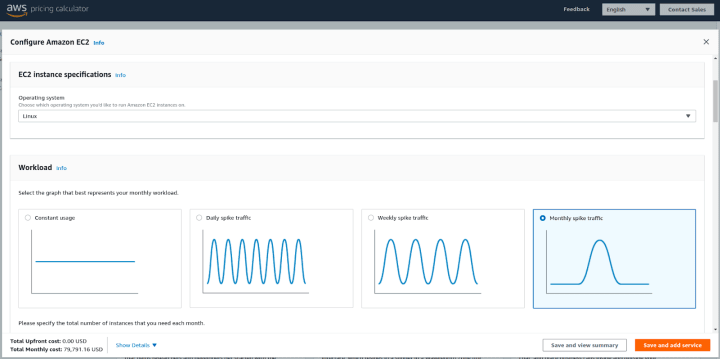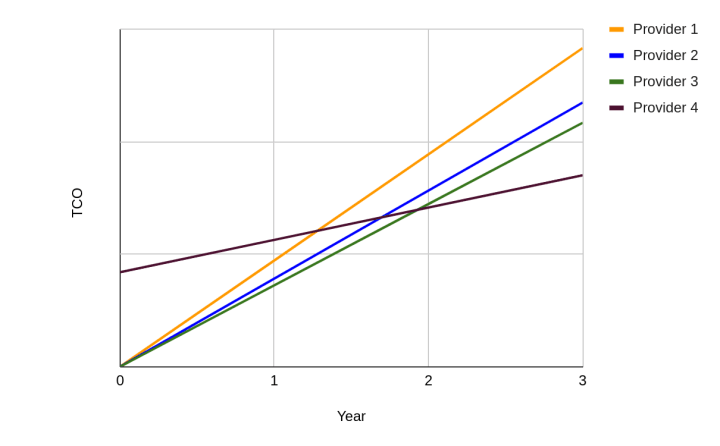Understanding AWS pricing
Canonical
on 27 October 2022
Tags: Amazon Web Services , AWS , calculator , Cost savings , OpenStack , Public cloud , Ubuntu Pro
Have you ever wondered how AWS pricing actually works?
You launch a startup or a new project in your organisation. You decide to use Amazon Web Services (AWS) as your primary cloud platform. You estimate costs based on listed prices, and rest assured that your startup/project will meet its budget. However the actual bill does not meet the estimated costs.
Many companies go through this journey. One reason is that AWS pricing is a little bit more complicated than one tends to think. The service itself is available in a variety of modes, and there are more ingredients you need to consider when estimating costs (aside from compute resources). The good news is there are many tools available to assist you with those calculations.,
Service modes
To help you optimise your cloud infrastructure costs, AWS is available in various service modes. While some of them are more suitable for micro workloads launched on-demand, others are more suitable for long-term production workloads.

Free Tier
Free Tier allows for free usage of AWS resources up to a specific limit. At the time of writing, this includes 750 hours of Linux and Windows t2.micro instances each month for one year. This might be a good option for organisations preparing for a cloud migration as well as students and individuals willing to learn AWS.
On-Demand
On-Demand mode is usually the default and the most popular mode across all leading public cloud providers. Users can launch instances on-demand and get charged for the exact amount of resources consumed over time. This approach is based on the pay-as-you-go (PAYG) approach with no upfront payments and long-term commitments.
Spot Instances
Spot Instances benefit from unused AWS resources which would otherwise be wasted. Spot Instances are launched whenever any extra resources are available. They are hibernated, stopped or terminated when the cloud needs those resources back. Spot Instances allow for significant cost savings compared to On-Demand pricing but are not suitable for workloads that need to meet service-level agreements (SLAs).
Saving Plans
Saving Plans are a compelling option to save costs when you are running workloads in the long term. By committing to specific usage, measured in $/hour, for at least one year, organisations can benefit from competitive pricing compared to the On-Demand mode. Saving Plans are suitable for production environments with pre-defined resource requirements.
Dedicated Hosts
Dedicated Hosts also help organisations optimise costs when running workloads on AWS in the long term. As its name indicates, with Dedicated Hosts, organisations get physical machines allocated to them permanently; all resources are available exclusively for them. Dedicated Hosts might be the best option in situations where access to bare metal is required.
AWS pricing ingredients
All the AWS service modes presented, except for Dedicated Hosts, work based on PAYG billing. Organisations pay for the exact amount of resources consumed over time according to the official AWS pricing. There are multiple ingredients, however, that have an impact on the final quote. Those include:
- Compute resources – the number of vCPUs and the amount of RAM as defined in the Elastic Compute Cloud (EC2) instance type,
- Storage resources – the amount of storage, IOPS, throughput and snapshots as defined in the Elastic Block Storage (EBS) volume type,
- Network traffic – the amount of intra-region, inter-region and region-Internet network traffic, measured in GB of data transfer per month,
- Other resources – any other resources, such asElastic IP (EIP) addresses or Elastic Load Balancers, that create extra charges.
To complicate things even more, a bunch of those resources are available for free up to certain limits. However, extra charges apply when you exceed those limits. If your latest invoice from AWS surprised you, you might not be taking all the ingredients into account.
Furthermore, Canonical’s research confirms that compute resources account for only a portion of overall spending on public cloud infrastructure. According to our Cloud Pricing Report 2022, many organisations claim that the most significant portion of their budget is spent on storage resources (TB) and network resources.

AWS pricing calculator
At this point, it should be clear that there are multiple factors that determine the final pricing. However, estimating all those individual costs manually can be a nightmare. Especially when you’re dealing with large, multi-service workloads. Fortunately, AWS provides dedicated tools to help its customers with this process.
AWS’ pricing calculator provides total cost of ownership (TCO) estimates for cloud instances based on their number, configuration and additional requirements regarding storage and network. More detailed estimates are available for various regions, guest operating systems and pricing models. The calculator estimates total monthly and yearly costs.

Another option is pricing assistance. This option involves reaching out to AWS’ sales team for a personalised quote based on detailed workload resource requirements. This might be the most convenient option for big enterprises as underestimating costs can have a negative impact on the entire cloud migration process.
Canonical’s Cloud Pricing Report 2022
Now that you have got a better understanding of how AWS pricing works, you might be wondering how it compares to other leading cloud providers.
Canonical’s cloud pricing report 2022 provides an overview of cloud list prices from leading public and private cloud providers as of July 2022. By considering three sample cost scenarios and using official TCO calculators, we estimate the costs of running the same workload across leading cloud platforms. The report includes results from our Cloud Pricing Survey 2022 and commentary from industry experts. The survey’s outcomes show the growing importance of hybrid multi-cloud architecture and confirm its advantages from a TCO stance.

Learn more
Canonical partners with AWS to provide Ubuntu Pro for AWS customers. Ubuntu Pro is an Ubuntu LTS image with additional security coverage, delivering the most comprehensive open-source security and compliance for production mission-critical workloads.
Canonical helps Ubuntu users optimise infrastructure costs in hybrid multi-cloud environments, allowing enterprises to benefit from the best of the public and private cloud space simultaneously.
Read a whitepaper – “A business guide to hybrid multi-cloud” >
Smart operations, optimal architecture, better pricing.
OpenStack and Ubuntu bring automated deployment and management that help you optimise infrastructure costs — no matter your industry or use case.
